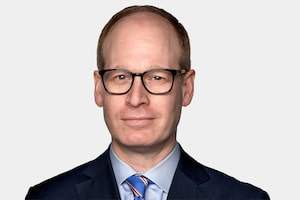
Vehicles travel eastbound on the 407 Express Toll Route (ETR) just before the exit for the 400 Highway.Louie Palu/The Globe and Mail
Warning: The following column is intended for a mature audience. It contains economic and fiscal ideas that some readers – and politicians – may find offensive. Viewer discretion is advised.
Buried deep in Finance Minister Chrystia Freeland’s fall economic statement is a section titled “Pension Fund Investment.” It goes on at some length about the successes of the Canadian pension model.
You know the story: how Canada’s pension funds, with a “fiduciary duty to maximize risk-adjusted returns for plan members and retirees,” have been “responsibly investing Canadians’ pension contributions,” and today “manage more than $3-trillion in pension assets, representing one of the largest pools of investment savings in the world.” As a result, “Canadian pension funds, and their strong performance, are the envy of the world.”
All true.
But Ms. Freeland’s document then goes on to say that Ottawa “believes” that “investments by Canada’s pension funds” could be used “to boost Canada’s economy.” It proposes to “work collaboratively” with pensions “to create an environment that encourages and identifies more opportunities for investments in Canada by pension funds and by other responsible investment pools.”
My spidey senses are tingling. Yours should be too.
Funds like the Canada Pension Plan Investment Board (CPPIB) exist to finance the pensions of future retirees. The system works because, with the exception of a bit of a fuzzy dual mandate at the Caisse de dépôt et placement du Québec, our pensions are singularly focused on benefiting contributors. Period.
It’s not clear what the words in the fall economic statement portend, or if this is just one more trial balloon that won’t ever get off the ground.
It is, however, worth noting that, in Britain, a government desperate to juice the economy and climb in the polls – ring any bells? – is pushing pensions to invest in its priorities. The £360-billion ($616-billion) Local Government Pension Scheme, which manages 86 municipal pensions, recently agreed to raise its allocation to private equity to 10 per cent so that, according to the Financial Times, “more cash is directed towards UK start-ups.”
The idea of ordering Canadian pension funds to invest more in Canada, or in a particular asset class, should be a non-starter.
But making it possible for Canadian pensions to invest more in Canada, in a particular class of highly desirable assets? That should be a starter.
The asset in question: infrastructure.
CPPIB and the Caisse are the planet’s two largest institutional infrastructure managers, according to the trade publication IPE Real Assets. Two Ontario pensions, OMERS and Teachers, also crack the top 10. A ton of Canadian pension money is in infrastructure.
But Canada has a unique public finance model for our most expensive and extensive infrastructure: roads. Our model, with few exceptions, is that taxpayers build bridges, tunnels and highways … and then we give them to drivers, for free. As such, our roads are not income-generating assets. They are, instead, taxpayer obligations. Very heavy obligations.
That’s why the City of Toronto long begged the province to take the Don Valley and Gardiner expressways off its hands, as finally happened last month. The expressways carry hundreds of thousands of vehicles a week, at zero cost to drivers, and a high cost to taxpayers.
Ontario taxpayers may be assuming as much as $6.5-billion in costs over the next decade for the two roads, which Premier Doug Ford says will never be tolled.
In other countries, however, highways are investable assets. Operated on the principle of user pay, their tolls generate stable, predictable streams of income, and take costs off the backs of taxpayers.
CPPIB – with $51.9-billion invested in infrastructure around the world, according to its most recent annual report – owns stakes in toll highways in India and Mexico, two huge highway projects in Sydney, Australia, and the tolled express lanes on three interstates in the Washington area.
In Canada, CPPIB owns 50 per cent of the 407 ETR expressway north of Toronto. When SNC-Lavalin (now known as AtkinsRéalis) sold a 10-per-cent stake in the project in 2019, the price was $3.25-billion – implying a value of $32.5-billion for the 108-kilometre highway. (Ontario, which sold off the entire project for a tenth of that price in 1999, really got taken to the cleaners.)
It gives a sense of how much other Canadian highways would be worth, if they were tolled.
Governments could finance a lot of other things if drivers paid to use highways, regardless of whether governments retained ownership of the roads or sold them off. Tolls on the Gardiner and DVP – or a privatization, with the net present value of future tolls likely indicating a sale price running into 11 figures – could probably cover the cost of building the Ontario Line subway.
And it’s not just roads. CPPIB owns 34 per cent of Associated British Ports, which operates 21 ports, and 5.6 per cent of Groupe ADP, which operates Paris’s main airport and several others. The Caisse owns 27 per cent of the port of Brisbane, Australia, and 13 per cent of London’s Heathrow Airport.
Canada’s airports, unlike most of our highways, do at least operate on the principle of user pay. But these stable, income-generating assets, which Canadian pensions are eager to invest in around the world, are not open for investment in Canada.
 Tony Keller
Tony Keller